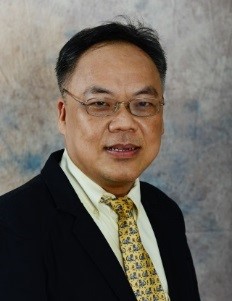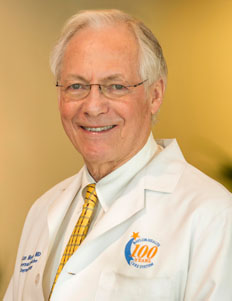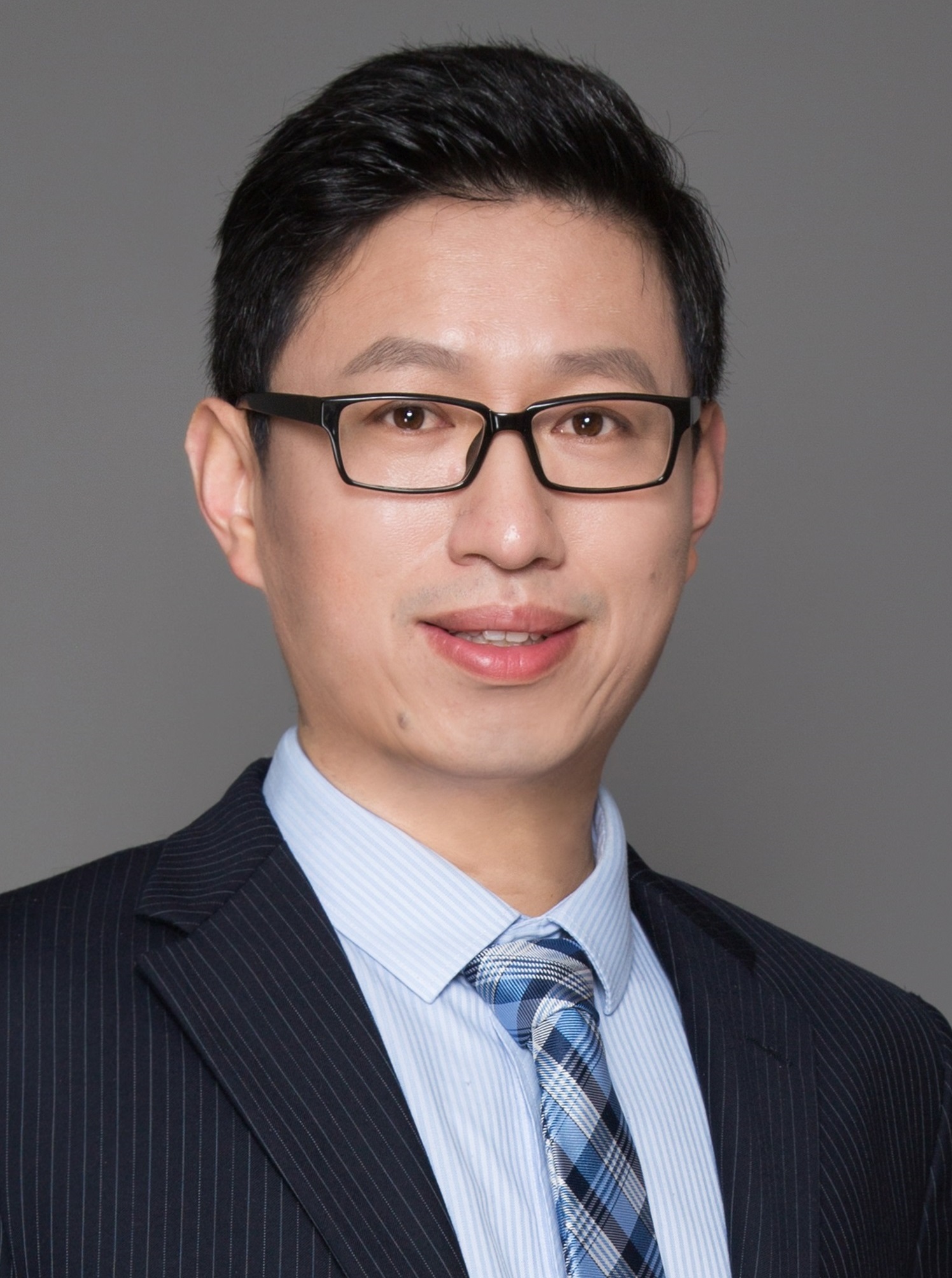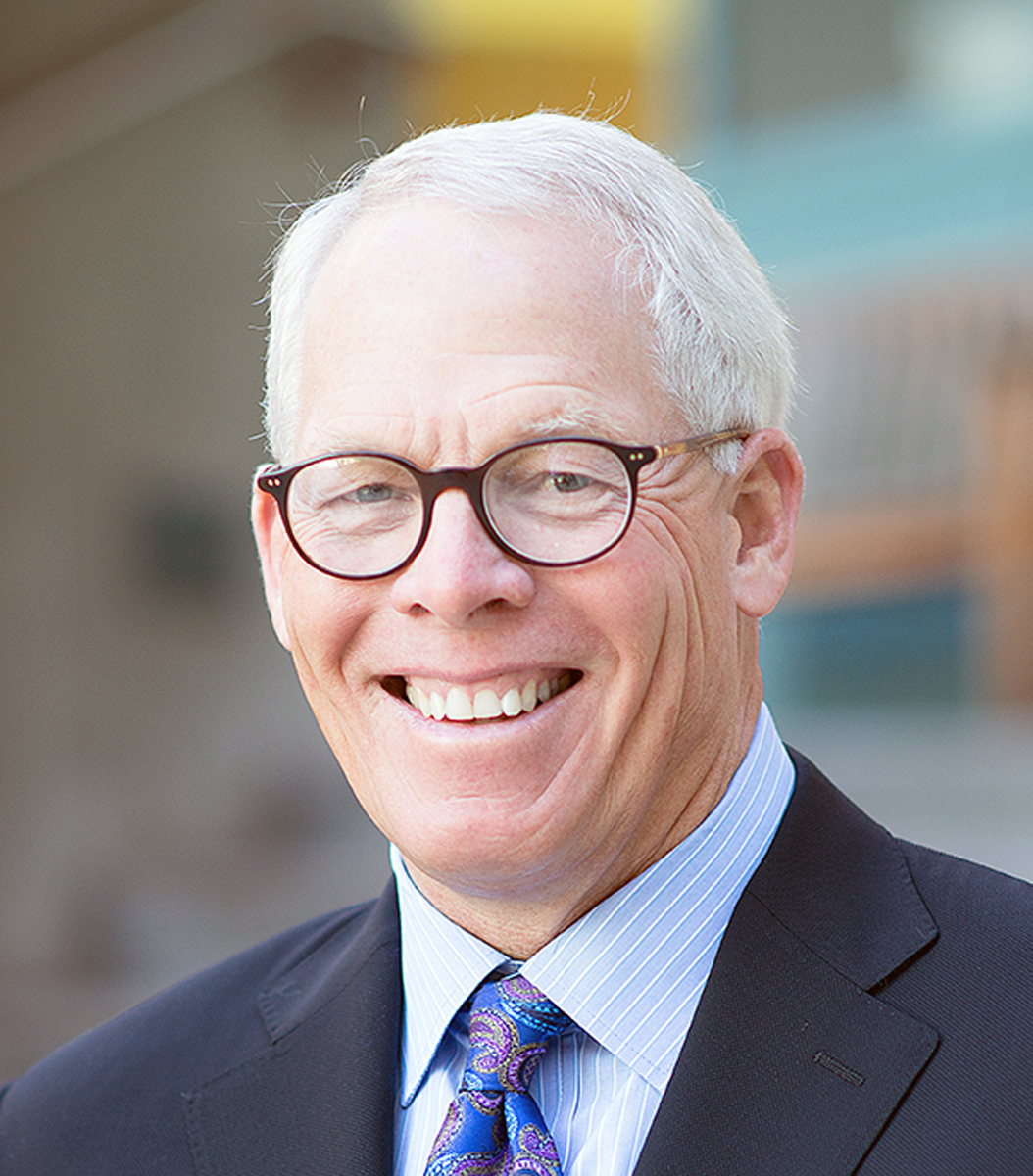Keynote Speakers
Dr. Eddie Y. K. Ng
PhD, PGDTHE, FEASA [EU], FASME [USA], FIETI [HK], FIET [UK], DFIDSAI [CN], Nanyang Technological University, SingaporeSpeech Title: High Contrast Vein Visualization with Active Dynamic Thermography (ADT)
Abstract: In this talk, a novel method that will aid in the visualization of vein topology on a target area on the body of a human subject is presented. An external cooling means is configured to cool the left forearm of fourteen study participants, effecting an active thermal change or recovery in the target area upon removal of cooling. An infrared (IR) thermal camera was used to capture a series of transient thermal images. These images were then processed to extract Dynamic Synthetic Images (SI) throughout the active thermal change or recovery process. Dynamic SI was calculated using a new quantitative parameter named Tissue Activity Ratio (TAR), defined by the rate of rewarming to the rate of cooling at each pixel of interest. A fixed step size of rewarming temperature (0.5 ) was used to progressively extract multiple synthetic images throughout the whole recovery process. Compared to a Static SI extraction method, where only a single SI results from the whole active dynamic thermography (ADT) sequence, our study demonstrates a live feed of high contrast vein visualizations by using the novel Dynamic SI method. The dependency of Dynamic SI contrast on the temperature of the external cooling stimulation was investigated. Three cooling stimulation temperatures (5 , 8 , and 11 ) were tested, where no statistically significant difference in the resulting SI contrast was found. In all, I will discuss on assisting venipuncture or cannulation-based clinical applications, through the incorporation of the proposed method with a projection system.
Keywords: Active Dynamic Thermography; Image Contrast; Tissue Activity Ratio (TAR); Thermal Image Reconstruction; Vein Visualization; Vein Projection; Venepuncture
Ref.:
Saxena and Ng et al, "A Method to Produce High Contrast Vein Visualization in Active Dynamic Thermography (ADT)", Computers in Biology and Medicine, (2021), Vol. 132, pp. 104309 (9 pages), https://doi.org/10.1016/j.compbiomed.2021.104309
Biography:
Eddie is elected as:
* Academician for European Academy of Sciences and Arts (EASA, EU);
* Fellow of the American Society of Mechanical Engineers (FASME, USA);
* Fellow of Institute of Engineering and Technology (FIET, United Kingdom);
* Fellow of International Engineering and Technology Institute (FIETI, Hong Kong);
* Distinguished Fellow for Institute of Data Science and Artificial Intelligence, (DFIDSAI, China);
* Academician for Academy of Pedagogy and Learning, (USA).
He has published numerous papers in SCI-IF int. journal (430); int. conf. proceedings (130), textbook chapters (>105) and others (32) over the 29 years. Co-edited 14 books in STEM areas.
He is in the Stanford list of the World’s top 2% Scientists since 2019 (ranked 173 as 0.001% in the field of Biomedical Engineering).
He is the:
* Lead Editor-in-Chief for the ISI Journal of Mechanics in Medicine and Biology for dissemination of original research in all fields of mechanics in medicine and biology since 2000;
* Founding Editor-in-Chief for the ISI indexed Journal of Medical Imaging and Health Informatics;
* Associate editor or EAB of various referred international journals such as Applied Intelligence, BioMedical Engineering OnLine, Computers in Biology & Medicine, and, Journal of Advanced Thermal Science Research.
More details can be found in: Cv: https://dr.ntu.edu.sg/cris/rp/rp00847.
Ng obtained Ph.D. at Cambridge Univ. and elected as an Academician for European Academy of Sciences and Arts, a Fellow of The American Society of Mechanical Engineers; The Institution of Engineering and Technology [UK], and International Engineering & Technology Institute [HK]. He researches in numerical simulation in the biomedical engineering, thermal-fluids and health-related diagnosis fields. He is Editor-in-Chief for 2 ISI-journals which were captured by the JCR within 2-years of their inauguration. He has been recognized internationally for academic excellence. He received numerous best papers, service awards and has graduated 23 PhD and 26 Master students. He was awarded the SPRING-Singapore Merit Award for his work in thermal imagers to screen SARS fever and contributions to the Singapore Standardization Program. Twenty-one of his papers have been adopted as references in Singapore Standard (SS-582, Parts 1&2: 2020) and ISO/IEC 80601-2-59: 2017. He serves as a panel member for Singapore Biomedical and Health Standards Committee since 2011. Being a co-inventor of 3 US patents on software classifiers to identify the different stages of breast cancer development in iTBra-system, he was accoladed with equity in a listed company. His ongoing work on non-contact screening for carotid artery stenosis and superficial vein-finder has resulted in 3 TDs. He has notable citations in the field of infrared physics & technology.
Dr. Alan Menter
ChairmanDivision of Dermatology, Baylor University Medical Center, USA
Speech Title: Psoriasis: update on Biologic Agents
Abstract: The development of new biologic agents for the treatment of moderate-to-severe psoriasis has taken a major advance over the past decade. The original biologic drugs were the TNF- α agents, i.e. Etanercept, Adalimumab, Certolizumab and Infliximab, all of which were first approved, prior to psoriasis, for psoriatic and rheumatoid arthritis. Subsequently, after the advent of Ustekinumab, the only IL 12-23 agent, 6 new biologic agents, i.e. IL-17 and IL-23 antagonists have been approved for moderate-to-severe psoriasis, with excellent clinical efficacy as well as high quality safety.
In 2019, the American Academy of Dermatology along with the National Psoriasis Foundation published a full and lengthy review of updated Guidelines for the management and treatment of psoriasis with biologic agents. Three IL-inhibitors, i.e. Secukinumab, Ixekizumab, and Brodalumab, as well as three IL-23 inhibitors, Tildrakizumab, Guselkumab and Risankizumab were all fully discussed, along with clinical trial data of all 6 agents.
A number of then original biologic agents, i.e. the 4 TNF-α agents have now lost their patent protection with exactly equivalent biosimilar products available world-wide, at considerable (30-40%) price reduction.
Thanks to modern science, even complex molecules like the biologic psoriasis drugs can be developed as biosimilars today.
Keywords: biologic agent, IL 17, IL-23, Psoriasis, biosimilars
Biography: Dr. Alan Menter was born in England and is a graduate of the Medical School of the University of Witwatersrand, South Africa. He completed his dermatology residency at Pretoria General Hospital at the University of Pretoria, also in South Africa, and two fellowships in London at Guy's Hospital and St. John's Hospital for Diseases of the Skin.
A fellowship with the University of Texas Southwestern Medical Center in Dallas brought Menter to the United States in 1975. Since then, he has held several positions within the UT and Baylor University Dallas systems. In 1992, he was appointed chairman of the Division of Dermatology at Baylor University Medical Center and still holds that position. In 2007, he was appointed director of the Baylor Research Center and in 2010, Program Director of the newly formed Dermatology Residency Program at Baylor University Medical Center.
Committed to patients
Dr. Menter has a long-held interest in psoriasis and psoriatic disease research. In 1994, he co-authored the first gene discovery for psoriasis, published in Science in 1994. His research on psoriasis has examined everything from ultraviolet phototherapy, new biologic therapy to the mapping of genetic patterns to predict if a person is at risk of developing psoriasis pharmacogenomics.
In August 2004, Dr. Menter helped found the International Psoriasis Council to raise international awareness of psoriasis as a serious autoimmune disease that can significantly impact quality of life. His clinical practice includes more than 1,800 patients on systemic and biologic therapy.
Dedicated to research
Dr. Menter held the position of clinical director of the National Psoriasis Foundation Gene Bank from 1996 to 2002. His resume lists some 385+ articles, 6 books and 21 book chapters. He serves as a member of the editorial board for several medical journals, including the Journal of Clinical Dermatology and Clinical and Experimental Dermatology. He is Dermatology Chair at Baylor Scott & White, Dallas and Program Director our Dermatology Residency Program as well as clinical professor of dermatology at the University of Texas Southwestern Medical School in Dallas and professor at Texas A&M Health Science Center, College of Medicine.
Other accomplishments
Dr. Menter has been listed in the Best Doctors in America since 1994 and Who’s Who in Medicine and Healthcare since 1996. He also represented the South African National Rugby team, the Springboks, in 1968. In 2013, Dr. Menter received the Lifetime Achievement Award from the National Psoriasis Foundation. In March 2015, he received the Dermatology Foundation annual Clark W. Finnerud award at the AAD meeting in San Francisco. Dr. Menter also received the Preseidential Citation March 2016 and 2018 at the AAD meetings.
Dr. Chengyu Liu
Professor, State Key Laboratory of Bioelectronics, School of Instrument Science and Engineering, Southeast University, Nanjing, ChinaDirector, Wearable Heart-Sleep-Emotion Intelligent Monitoring Lab, Southeast University, Nanjing, China
Speech Title: Wearable ECG Intelligent Monitoring: Data, Algorithm and Clinical Applications
Abstract: Real-time, long-term wearable ECG monitoring is essential for early detecting the cardiovascular diseases and other health risks, such as sleep disorders and emotion problems. This talk presents the important aspects about wearable ECG study, and summarizes the technology challenges exist in each aspect. High-quality well-labelled database is needed, which plays an essential role in training reliable and generalizable models. Herein, the open-access and carefully labeled databases will be starved. Challenges from algorithm aspect include: real-time signal quality assessment, robust & accurate feature detection and explainable & generalizable AI-based disease detection model development. Finally, the efficient clinical applications are also important, which refer to the specially designed clinical studies (such as atrial fibrillation detection) with the close cooperation with doctors.
Keywords: Wearable ECG, Monitoring, atrial fibrillation
Biography: Dr. Liu received his B.S. and Ph.D. degrees in Biomedical Engineering from Shandong University, China, in 2005 and 2010 respectively. Dr. Liu has completed the Postdoctoral trainings at Shandong University, Newcastle University in UK (2013-2014) and Emory University in USA (2015-2017). He is now the Interim Director of the School of Instrument Science and Engineering in Southeast University, a Professor of the State Key Laboratory of Bioelectronics, and the founding Director of Wearable Heart-Sleep-Emotion Intelligent Monitoring Lab in Southeast University, leading the research works on medical big-data processing, medical device development and clinical applications. He also serves as the founding chair for the annual China Physiological Signal Challenge (from 2018). He is now a member of Federation Journal Committee of International Federation for Medical and Biological Engineering (IFMBE), a member of the 10th Council of Chinese Society of Biomedical Engineering (CSBME), and serve as an Executive Editorial Board member for Physiological Measurement, an Associate Editor for Medical & Biological Engineering & Computing, an International Advisory Editorial Board member for Journal of Medical and Biological Engineering, an Associate Editor for Journal of Mechanics in Medicine and Biology, an Editorial Board member for Journal of Biomedical Engineering (in Chinese), etc. He has published more than 250 original Journal/Conference papers, and holds more than 30 patents as an inventor. He won the title of “2017 Young Scientist” from the Lenovo Group (only one per two years). His team obtained the first place for the 2019 PhysioNet/Computing in Cardiology Challenge, and obtained the Champion of the 2018 International Competition of Shenzhen Medical Health Big-data in Application Innovation Group. His research topics include: mHealth and intelligent monitoring, machine learning and big data processing for physiological signals, early detection and device development for cardiovascular diseases, sleep quality and emotion status monitoring.
Dr. Stephen M. Howell
Professor of Biomedical Engineering, University of California at Davis, USAOrthopedic Surgeon, Adventist Health/Lodi Memorial Hospital, USA
Speech Title: Calipered Unrestricted Kinematically Aligned TKA: The Target, Verification Checks, Accuracy, Implant Survival, and ‘Athletic’ Implant Design
Abstract: Purpose: Cover the following five talking points in 25 minutes
1. Restoring the pre-arthritic joint lines is the calipered unrestricted kinematic alignment (cuKA) target;
2. Mechanical alignment (MA) to the femoral head and ankle changes the joint lines causing adverse consequences;
3. Calipered unrestricted KA with manual instruments cuts the femur to target more accurately and quickly than robotics, navigation, and PSI;
4. Calipered unrestricted KA restores native tibial compartment forces, which promotes long-term implant survival;
5. The medial ball-in-socket and flat lateral insert (GMK Sphere) restores ‘athletic’ like function!
Methods: Evidence for these talking points is provided 1) by published clinical and biomechanical studies from 2006 to present and 2) by sharing observations based on a 15-year clinical experience of over >6000 consecutive primary TKAs that I performed with unrestricted calipered KA and verification checks.
Results: I will provide references that support each talking point in the presentation.
Discussion: Performing calipered unrestricted KA TKA with verification checks over the last 15-years provided many benefits to my office, hospital practice, and costs when compared to my prior 20-year experience with MA TKA.
1. In terms of the office, patients recover faster, have a higher function, better motion, and are more satisfied at six weeks after calipered unrestricted KA TKA than after MA TKA. These benefits translate into shorter post-operative visits, fewer post-operative visits, with more than half of those patients with bilateral osteoarthritis scheduling their contralateral TKA at the six-week follow-up visit. I perform ~ 500 KA TKA/year. Eliminating a 3-month and 1-year visit in 90% of these patients results in 900 fewer office visits/year. Assuming a post-op visit requires 15 minutes of my time, and I perform 20 hours of office per week, then the use of KA TKA with verification checks frees me from 225 hours and 11 weeks of office hours/year.
2. In terms of the hospital, we now perform calipered unrestricted KA TKA as a same-day discharge, which we initiated as a work around when COVID closed elective admissions to the hospital in July 2020. A 90cc intraoperative periosteal injection that costs $20 (US) provides 30 hours of post-operative pain relief.
3. In terms of costs, our use of a comprehensive pre-operative education program since 2017 eliminated the cost and use of physical therapists and visiting nurses after discharge. Coupled with same-day discharge, the health system saves ~$4000/patient.
Biography: Stephen M Howell, MD is an orthopedic surgeon specializing in treating knee disorders, an Adjunct Professor of Biomedical Engineering at the University of California at Davis, and holds 34 patents as an inventor of orthopedic devices.
He graduated from Northwestern University Medical School in 1981 and an orthopedic surgical residency at the Rothman Institute at Thomas Jefferson University in 1986. He served three years in the United States Air Force as an orthopedic surgeon and an additional 14 years as a reservist. He was recalled to active duty for the first Persian Gulf War and retired as a Lieutenant Colonel.
Dr. Howell’s clinical practice is in Lodi and Sacramento California, where he focuses on treating degenerative and sports-related injuries of the knee. He performs over 500 calipered kinematically aligned total knee arthroplasty (TKA) and 80 ACL reconstructions per year.
Since 1989 he has collaborated with Distinguished Professor Maury Hull. They have collectively educated and graduated 4 Ph.D. students and 33 master students in mechanical or biomedical engineering. Dr. Howell has published over 189 scientific articles in peer-review journals and is the senior editor of the definitive textbook entitled Calipered Kinematically aligned Total Knee Arthroplasty (Elsevier).
His innovations since 2005 include pioneering the concept of calipered unrestricted kinematically aligned TKA. Kinematic alignment has gained worldwide interest as seven of nine randomized or case-controlled trials, and a national multi-center study showed that patients treated with kinematic alignment reported significantly better pain relief, function, flexion, a more normal feeling knee and alignment than mechanically aligned TKA. In 2006, he co-founded the first company to commercialize patient-specific instrumentation for TKA. He also identified and reported the clinical presentations, adverse consequences, and methods for reducing the risks of roof impingement and PCL impingement of the ACL graft in the late 1980s and 1990s, respectively.
He maintains two-industry relationships that enabled him to transform his concepts into products that benefit patients. Since 2016 he has consulted with the engineers at Medacta, Inc (www.medacta.com/EN/mika) and assisted them with developing the calipered unrestricted kinematic alignment platform for total knee arthroplasty. Since 1992 he has consulted with Zimmer-Biomet Sports Medicine, contributing to the design of ACL instrumentation for tunnel placement and fixation devices for soft-tissue grafts.
Dr. Howell frequently shares his clinical experiences and research findings as a presenter and invited speaker at national and international meetings and universities worldwide. For his work, he received an honorary membership in the German Arthroplasty Association in 2018. Dr. Howell is a past-president of the International ACL Study Group and a member of the American Association of Hip and Knee Surgeons, the International Society of Arthroscopy, Knee Surgery and Orthopedic Sports Medicine, the American Academy of Orthopedic Surgeons, as well as the Arthroscopy Association of North American.
Dr. Howell is committed to surgeon education. He maintains an educational website for those that wish to learn more about calipered kinematically aligned TKA (www.drstevehowell.com) and regularly publishes instructional videos (www.vumedi.com). Weekly, he hosts experienced orthopedic surgeons worldwide who seek education in his techniques through the observance of patient care in the office, hospital, and operating room.




